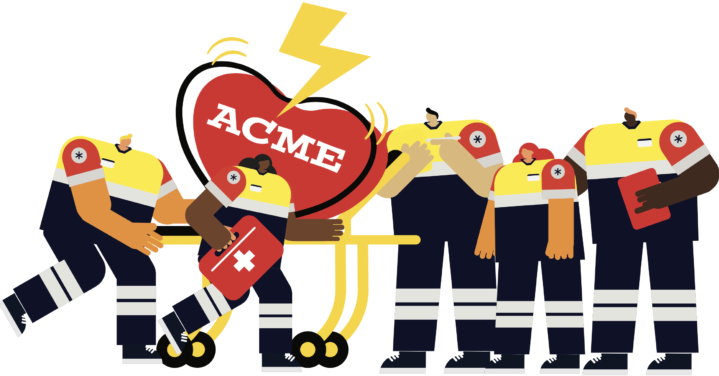Agile transformation initiatives are doomed to fail if leaders only pay lip-service to the need for change.
Agile has become an organizational mantra in the last few years. During the global pandemic, a variety of organizations were saluted for the agility of their response. There are a growing number of success stories: organizations that have successfully applied new project management techniques, usually scrum-based, to maximize the benefits of digitalization.
But at an organizational level, these success stories are often isolated. Scaling up agile principles and behaviors to the level of the organization is a challenging task. Smart leaders acknowledge the complexity and effort required, and avoid prematurely proclaiming that they have achieved the status of an agile organization. Others are less realistic and fall into the trap of agile theatre, continually signaling an interest in agile without delivering real change.
It is time for these fakers to be unmasked – not least because their theatrical commitments can snuff out promising developments at a local level.
Take the case of the local branch of a large multinational group which we worked with. The local branch’s digital unit started an agile journey by applying a diligent and sensible approach: training, experimentation and step-by-step consolidation of the methodology. They achieved certain benefits in terms of quality and speed. The working environment improved significantly, with a positive impact on talent attraction and retention. Some issues and constraints emerged, but the teams were extremely confident that they could overcome them.
Then, while the local branch was making progress in its agile journey, the corporate group launched its own highly ambitious agile transformation program, inspired by the operating models of Spotify and Ing Bank. The agile team members at the local branch were happy and excited. Listening to the new statements coming out of the group, they were increasingly confident that their agile efforts could scale.
It didn’t play out that way. When senior leaders were sent by corporate to lead the local branch, they continued to employ a traditional rigid management model, focusing on short-term financial results and strictly applying the cash-cow playbook. The words agile, entrepreneurship, innovation and trust adorned the walls – and stayed there. Most of the local branch’s internal agile ambassadors gave up and attrition rates in the digital area increased. The optimism of the local agile teams – in retrospect, perhaps naïve – gave way to disappointment and disillusionment.
Spotting the signs
As management researchers and consultants, we have witnessed many similar situations in which great ideas, frameworks and ways of working are picked up and dramatically announced as the way forward for an organization, before fading in the implementation. This ‘theatre’ effect is not new. It usually happens around emerging topics and buzzwords: think about innovation theatre, or the reengineering theatre of the past.
Today, agile theatre has a human cost. Inconsistency between high-level statements and actual behavior directly affects people and their aspirations. The failure of leaders to ‘walk the talk’ creates cynicism within the organization and undermines trust. At a time when principles such as sustainability, inclusion and purpose are high on the agenda of employees, and theoretically of organizations, theatrical opportunism carries a price.
What are the warning signs that commitments made by your organization’s leaders are destined to turn into agile theatre?
The first is when leaders talk too much about agile and use agile labels with theatrical abandon. Beware of leaders who are forever talking of scrum masters, product owners, sprints, stand-ups, and so on. Repetition does not equal implementation.
Second, look out for leadership behaviors which are the direct antithesis of agile values. Beware of prevailing management styles based on continuous vetting and micro-management, and leaders who are unwilling to translate agile value statements into concrete behaviors. Look too for agendas and conversations within leadership meetings that focus on short-term financial and operating indicators against budget, rather than on areas such as customer value creation, people’s motivation or new ideas.
A definitive confirmation that you are entering the realms of agile theatre can be established by checking and analyzing a set of hard facts, mainly related to the company architecture and processes.
- Have there been any changes in the goal-setting and resource allocation process (that is, planning and budgeting)? Or is it still based on a fixed-period logic – typically yearly or quarterly – with rigid comparisons made between actual and budget, across a well-established timeline throughout the year?
- Has the company changed its organizational design to adapt to agile practices and principles?
- Has the company introduced clear criteria and guidelines to assess where a team-based, scrum-like approach makes sense and where it does not?
- Has there been any removal of authorization mechanisms, such as steering committees for approvals?
- Is the decision-making process still based on thick organizational manuals and complex charts detailing roles and responsibilities?
- Has the company introduced a continuous feedback system based on peer reviews? Or is the yearly management-by-objective logic still prevalent?
- Have there been any changes in workforce planning methods to consider different skills and aspirations, and to dynamically balance teams and resources (including external)?
Of course, real situations are not black or white, and many companies are experimenting around some or all of the above items. But without a strong commitment to change from an organization’s leadership, it is very unlikely that key changes will be implemented – and nearly certain that the prevailing status quo will survive. Speed and flexibility, customer focus, employee engagement: the goals that inspire agile are more relevant than ever. The strategic direction is clear. But using the word agile is not necessary. What is required is getting serious about what agile means in practice.




